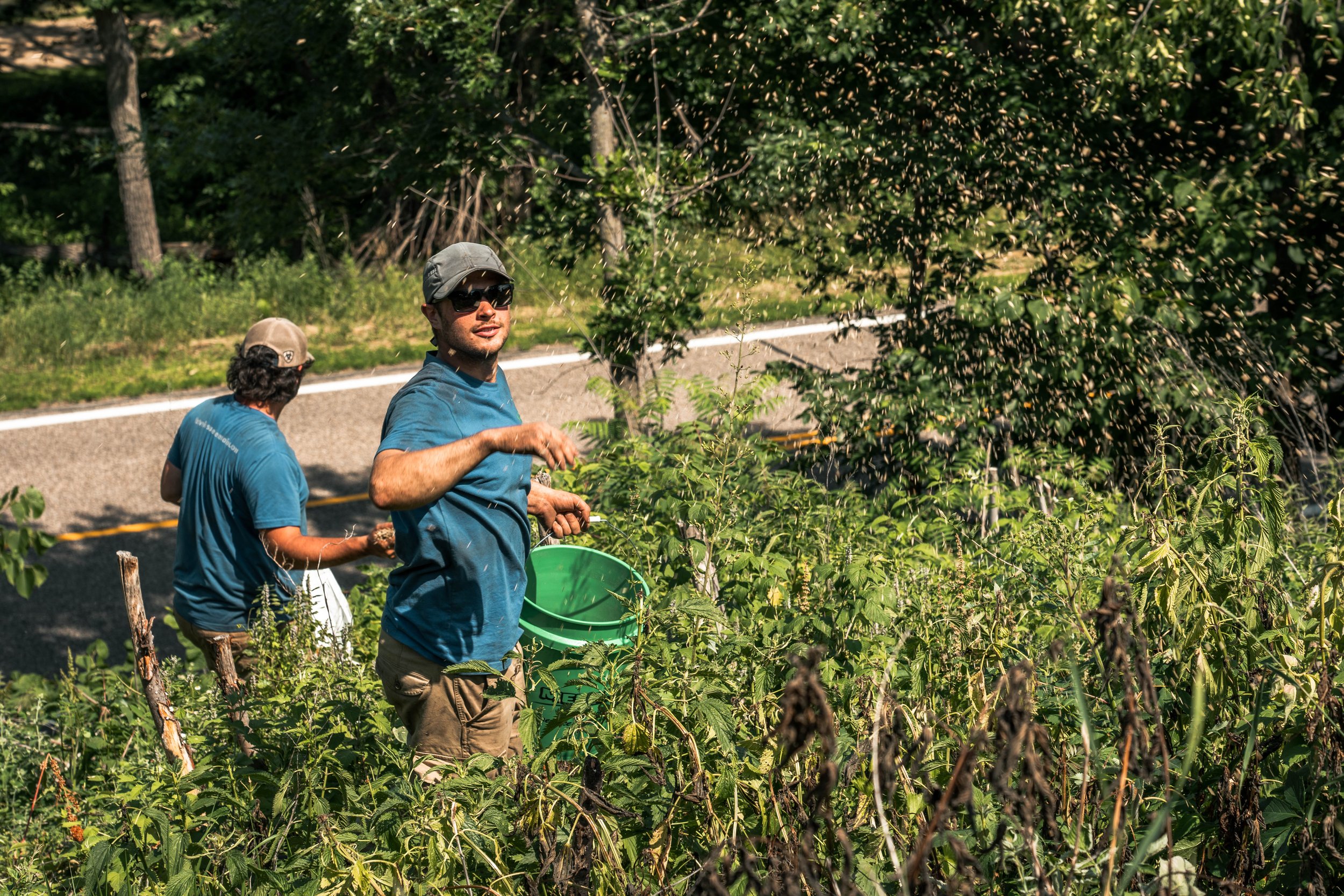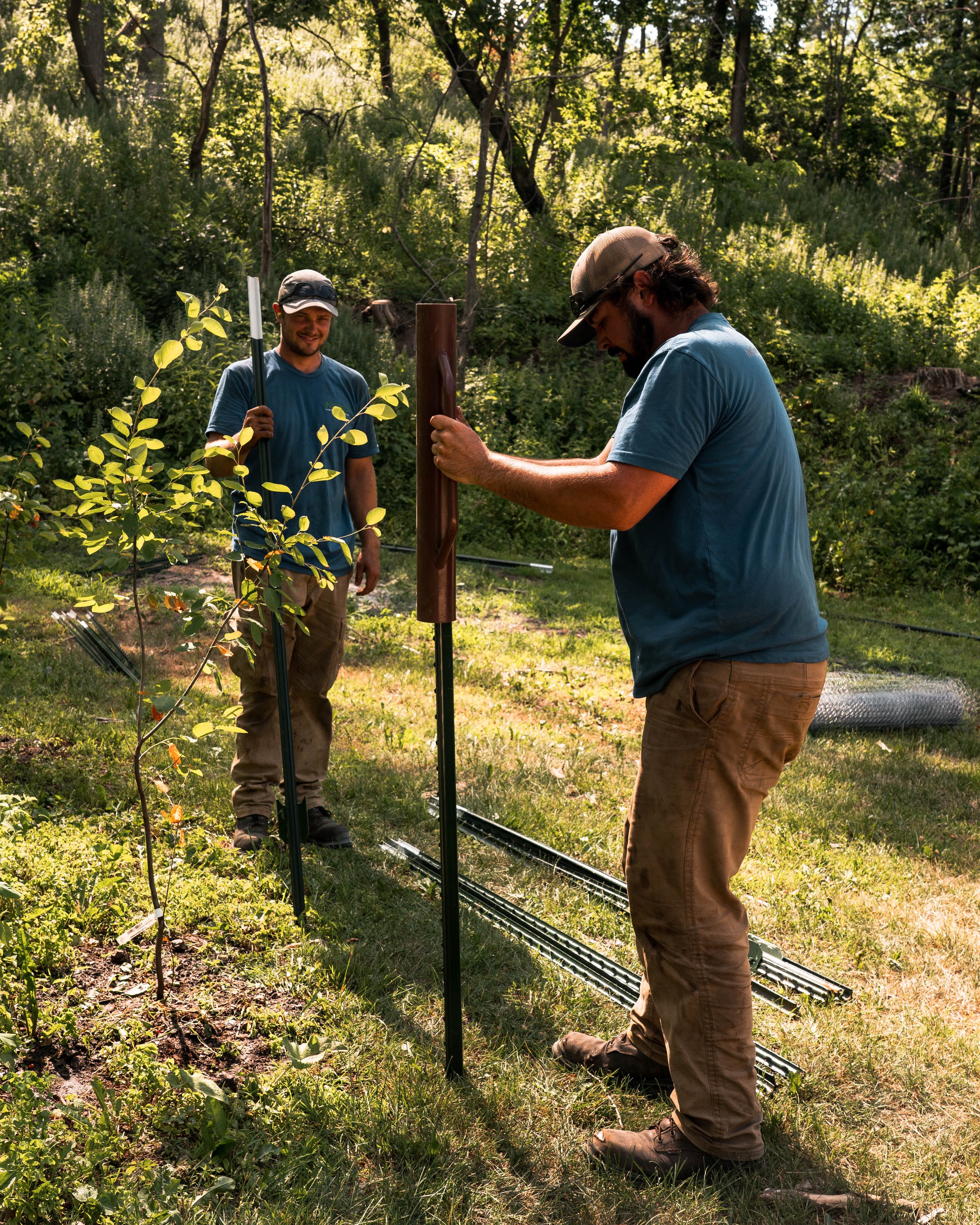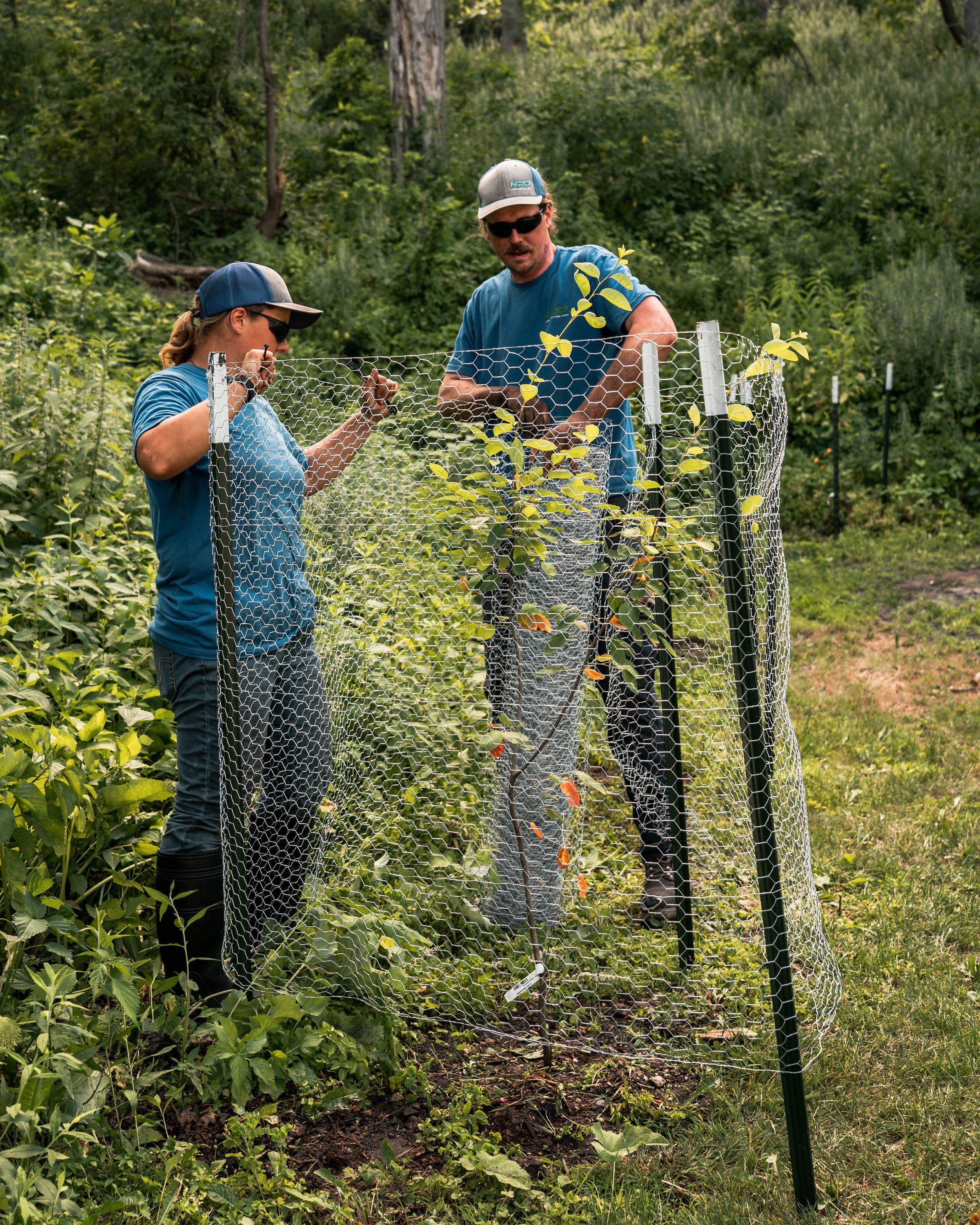Why Plant Native
Summer has arrived in a vengeance (100 degrees in June, really!?!), and ushered in a new growing season for Minnesota. NRP has been busy with garlic mustard treatments, prairie management, and seedings, but we’ve also visited our fair share of summer planting projects. Many people we talk to about planting have similar questions–what do we plant, what do we recommend planting, why can’t we just plant species that are flowering, why aren’t new plants blooming yet, etc. While the answers to these questions can have complicated nuances, they can all be boiled down to one simple answer–we plant native.
Native plants are defined as plants that exist within Minnesota in their natural range. Usually, we consider plants that were recorded by land surveyors in the 1800s to be native, and plants introduced since then to be non-native. There is a lot of ecological science behind native plant ecology and function, but to put it (very) simply–native plants are used to being here, and other organisms are used to them being here. Native plants are adapted to Minnesota habitat–its climate, weather patterns, drought cycles, and natural disturbances. Additionally, native plants provide key habitat to other native species. This is the primary reason that NRP deals exclusively with native plants.
We view every landscape–whether it’s a multi-acre nature reserve or a 100 square foot backyard–as a potential habitat. Creating the best native habitat in all areas is important to our mission of restoring ecological health and sustainability. In order to do that, we want to be putting native plants back into the landscape, and avoiding any non-native species that could cause future harm. This is crucially important for our planting projects. With every planting or landscaping project we approach–from pollinator gardens to landscaping to decorative flower beds–we only propose and install native species. These natives may not be as large or showy as many horticulture species, but they provide greater habitat value, especially for our pollinators and birds. Furthermore, many invasive species started as non-native horticulture plants that spread into wilderness areas and took over. Only planting natives ensures we are not unknowingly adding to future invasive species problems. Finally, since native plants are adapted to Minnesota, they often have better drought tolerance and hardiness than other non-native landscape species. Because many native plants have long root systems, they are also great at controlling erosion.
At NRP, our focus is always on the health of the land and the benefit of the natural habitats we value, so native planting is important and always worth the added effort (in our humble opinion). This is why we only prescribe native plants for any planting project–large or small, and why we encourage clients to approach their projects with a habitat-centered mindset. While we understand not everyone has large acres, planting natives in just a few dozen square feet can still provide valuable habitat for pollinators and birds. In urban areas where greenspace is limited, native plants can be a food and shelter oasis. So investing in even just a few of these native species is valuable.
It is important to understand that native species grow and mature slower than many nursery favorites. Native plants may not flower the first year (depending on their life cycle, every plant is different). They also tend to grow slowly because most natives spend their first year growing out their root systems rather than growing large above-ground biomass. During this time, be patient with your natives. Think of them as investing in their future, just like you. In time, they will be flourishing additions to your landscape.
Native species can be hard to find. Many nurseries don’t sell them, or they sell hybrid cultivars of them. If you’re unsure what’s native that will grow in your yard, or you need help finding plants, let us know! We love planting native!





